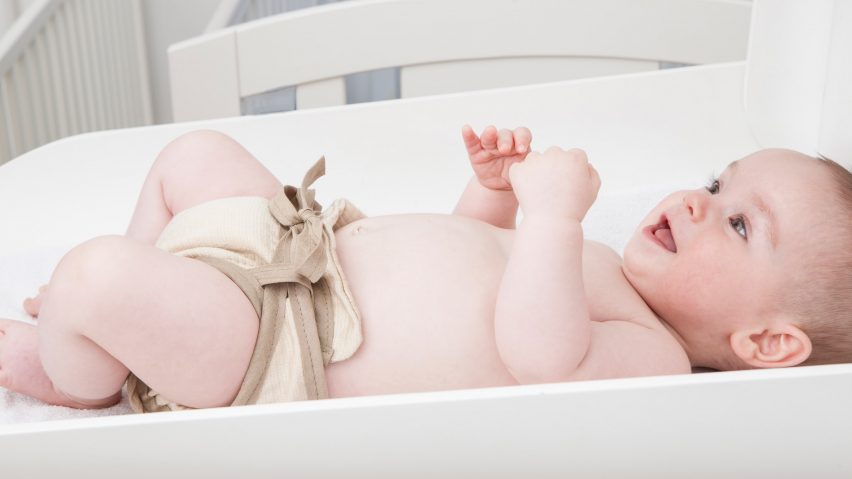
Sumo seaweed-fibre nappies offer healthy and sustainable alternative
ÉCAL graduate Luisa Kahlfeldt has designed a new diaper that is more sustainable than even other reusable cloth nappies — an innovation for which she won the Swiss James Dyson Award.
Kahlfeldt's Sumo nappies are made entirely of a fabric called SeaCell, composed of seaweed and eucalyptus. The textile is antibacterial and antioxidant-rich, so it is beneficial for babies' skin.
It's also sustainable to harvest and produce, giving it an advantage over the textiles used in most cloth nappies on the market. And since Kahlfeldt has fashioned it into a mono-material design, it is also more easily recycled, with no need to disassemble its components.
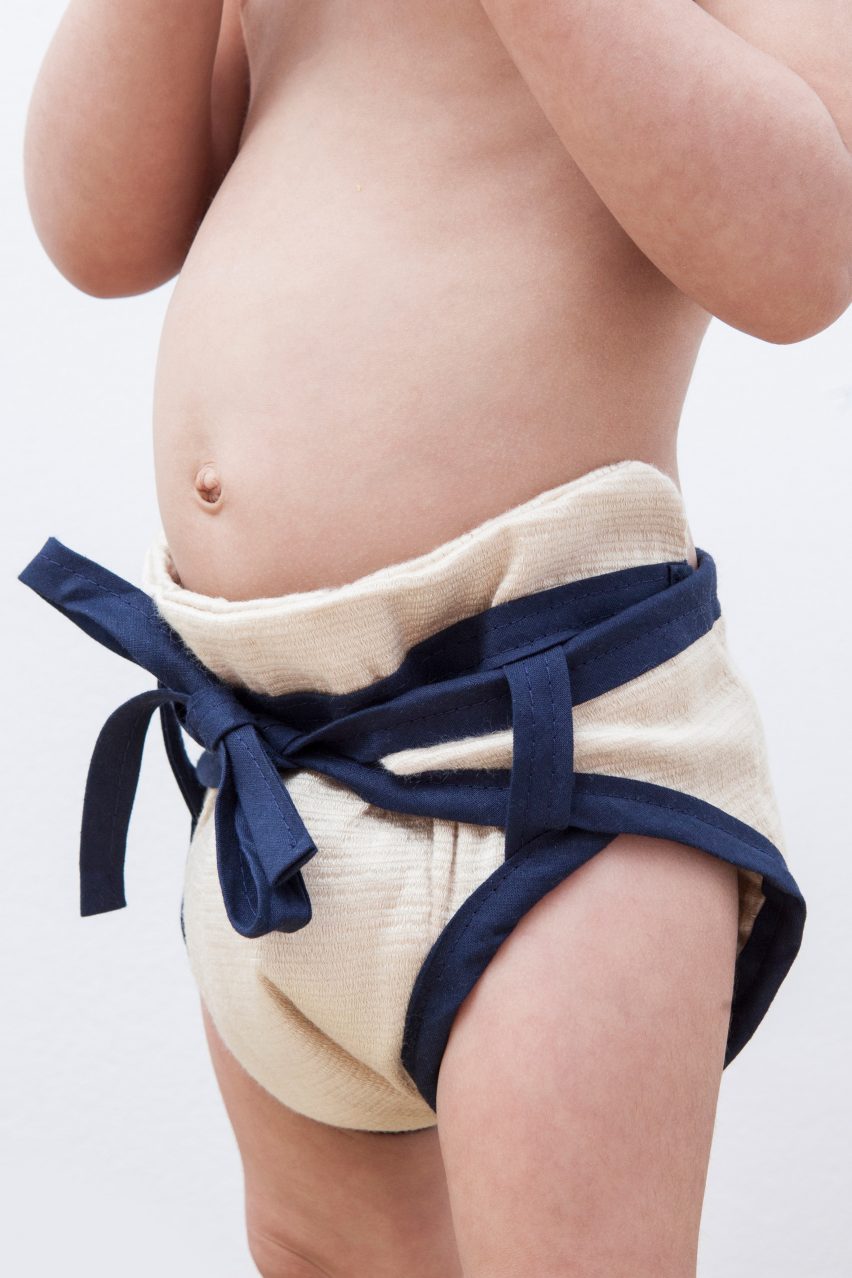
While Kahlfeldt's primary concern was to provide an alternative to disposable diapers — she says 17 million of them are binned every day in the European Union alone — it's Sumo's advances over standard cloth nappies that have earned it several awards, including the prestigious Dyson Award.
Kahlfeldt engineered SeaCell into three layers for Sumo — a soft and absorbent inner layer, an even more absorbent core, and then a waterproof outer layer that prevents any liquids from leaking out.
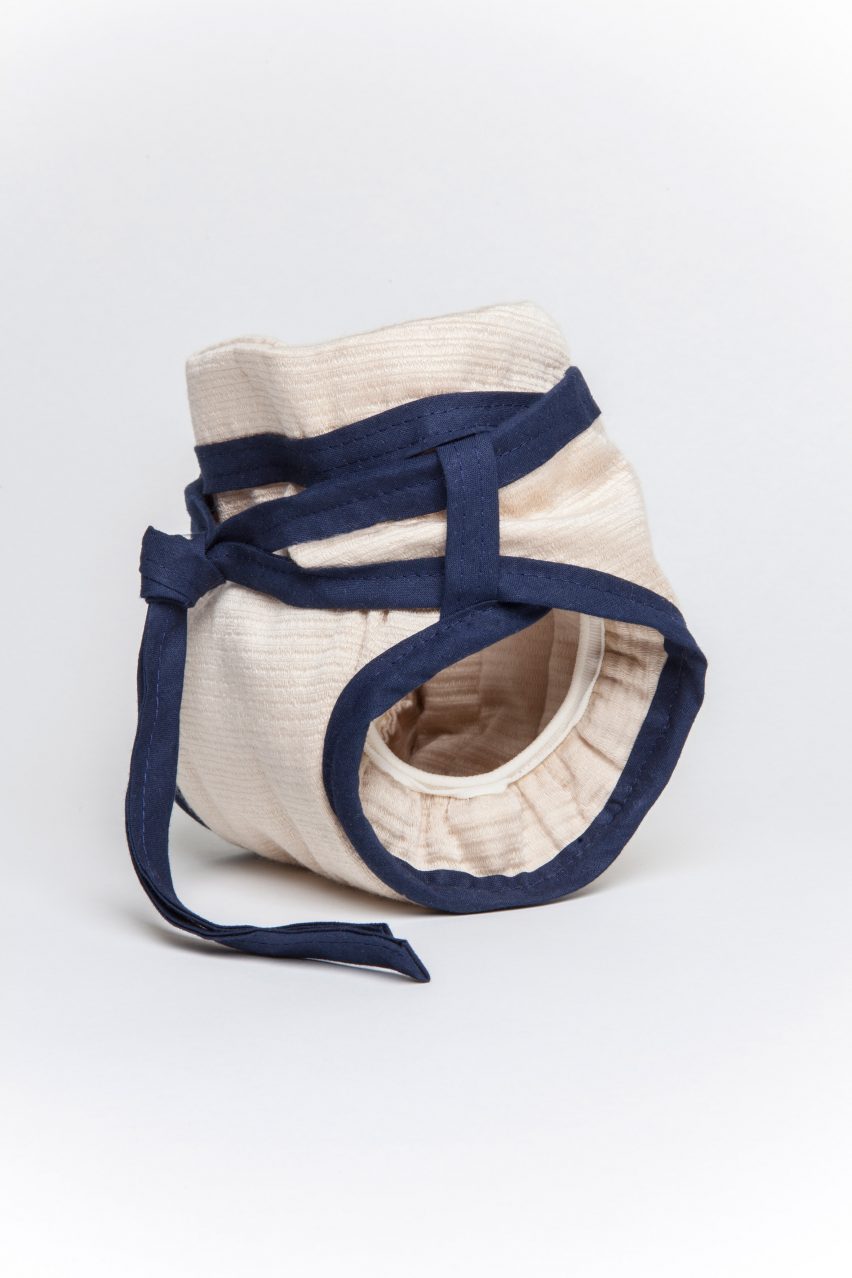
The waterproofing was enabled by a partnership with Swiss textile company Schoeller, whose EcoRepel technology waterproofs fabrics without affecting their biodegradability or recyclability.
Kahlfeldt says it also withstands abrasion and repeated machine-washing.
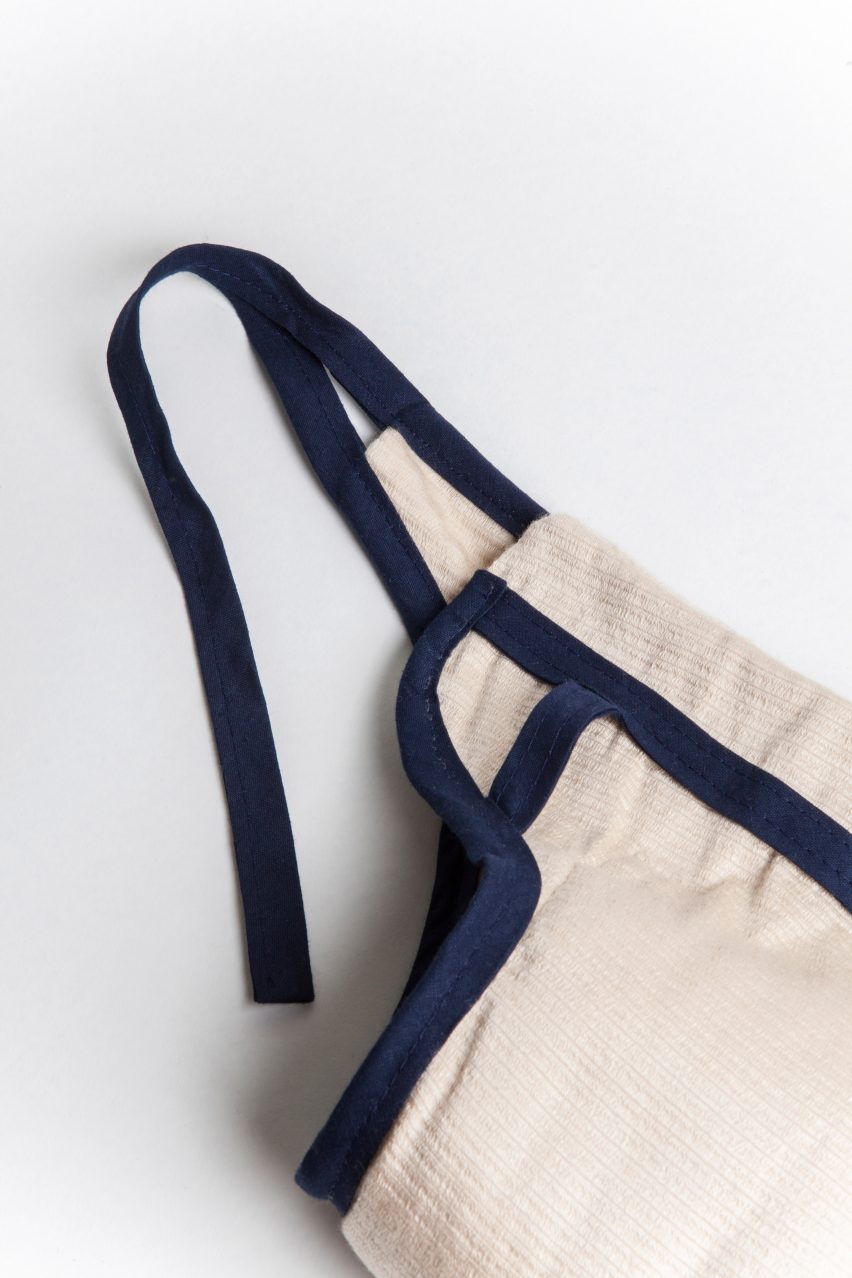
In most cloth nappies, the absorbent layers are laminated with polyester or polyurethane, so they cannot go on to be recycled. The addition of hooks and fastenings also typically obstructs the recycling process.
A particular challenge for Kahlfeldt was how to engineer stretchiness into the fabric without synthetic elastic bands. She achieved this with a method of knitting natural yarns called "Natural Stretch", which she says give them up to 20 per cent elasticity.
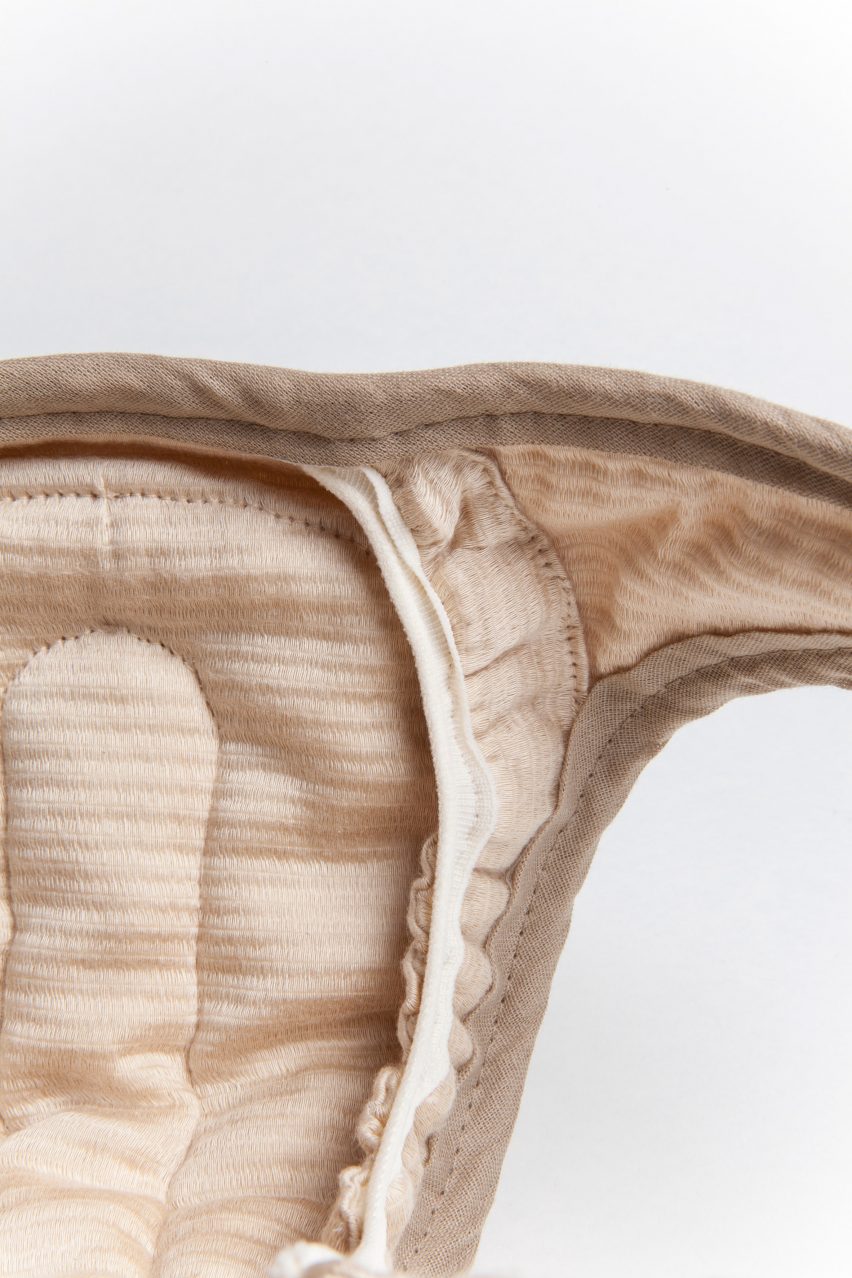
Kahlfeldt praises SeaCell as a material with "really unique" properties that are ideal for babies.
"The incredible softness of the fabric and its inherent anti-bacterial quality make it the perfect material to sit next to sensitive, naked skin," she told Dezeen.
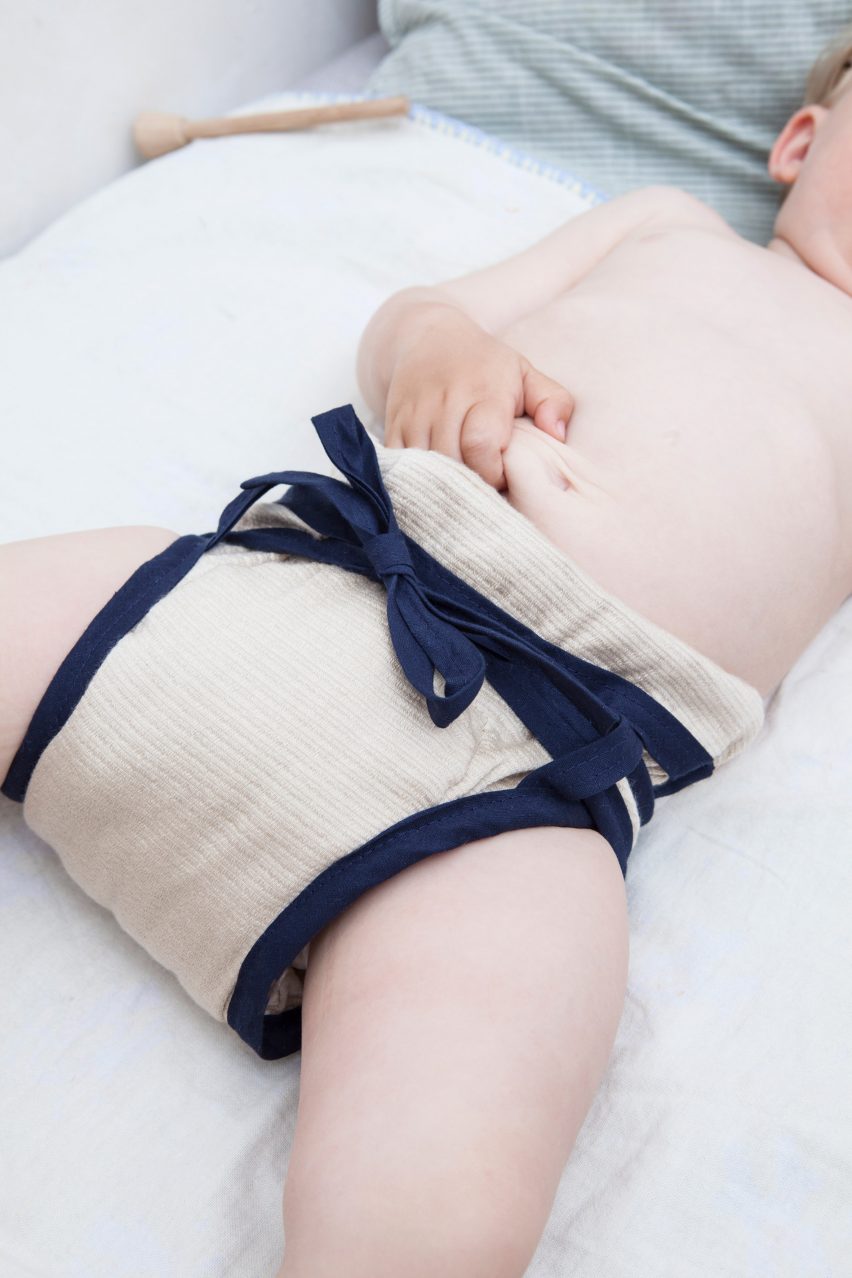
The minimal look of the diaper developed as she experimented with the textile, through a collaboration with the German Institute of Textile and Fibre Research (DITF).
The nappy is a natural colour with contrast ribbing, and it ties together simply at the front.
"I really like the pure, wholesome and very natural aesthetic of the product — something that I think is still quite rare in the world of baby products, where you often find cliché colours and cartoons printed on the fabrics," said Kahlfeldt.
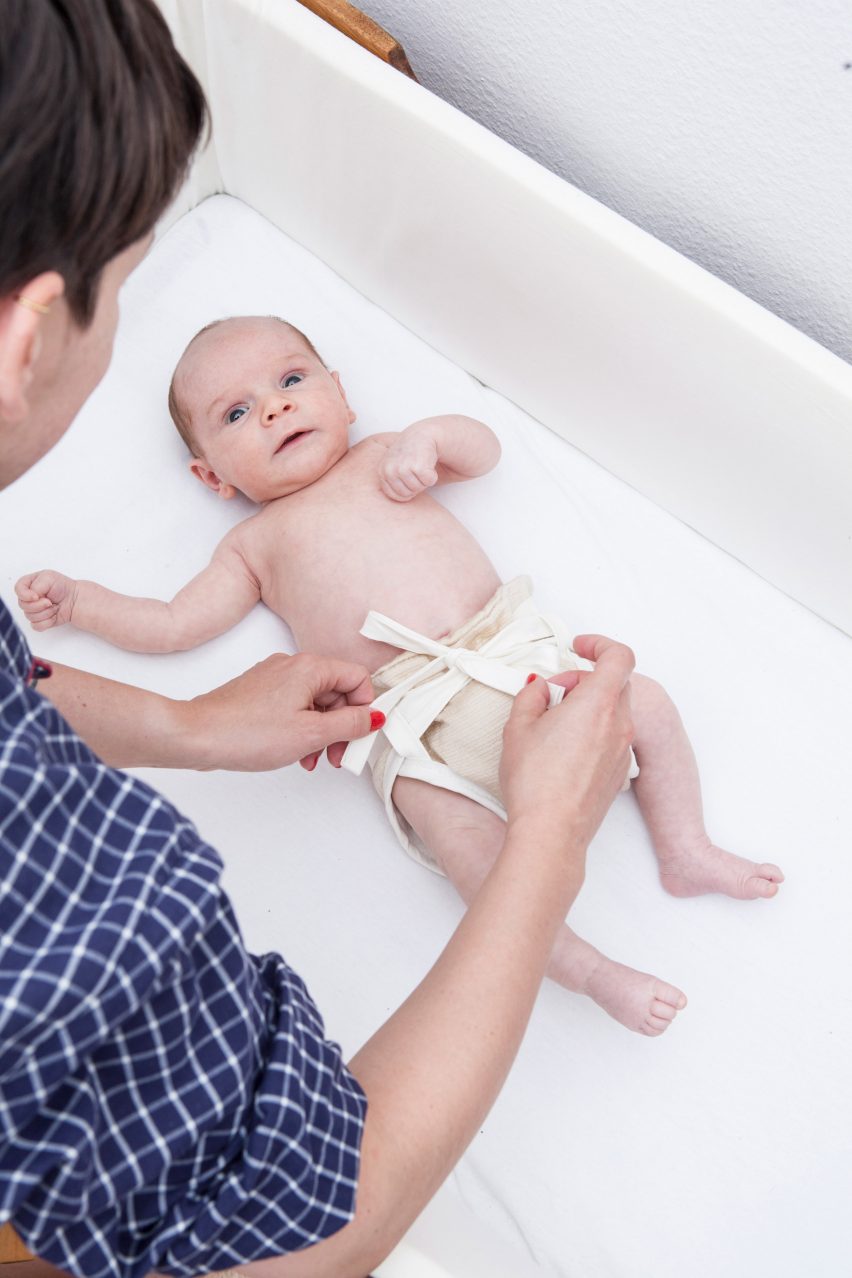
The designer developed Sumo as her masters project at the Ecole cantonale d'art de Lausanne (ECAL), one of the world's top design schools. She is currently working as a senior designer at Konstantin Grcic Design in Berlin.
Sumo was the winning entry from Switzerland in the national heats of the 2019 James Dyson Awards, which recognise the best in student design and engineering.

The design is now under consideration in the final, international round of the competition, where it is up against inventions such as the UK's MarinaTex bioplastic and a self-santising door handle designed by students from the University of Hong Kong.
Last year's grand prize winners were the UK team of Nicolas Orellana and Yaseen Noorani, who invented the O-Wind Turbine for cramped urban environments.